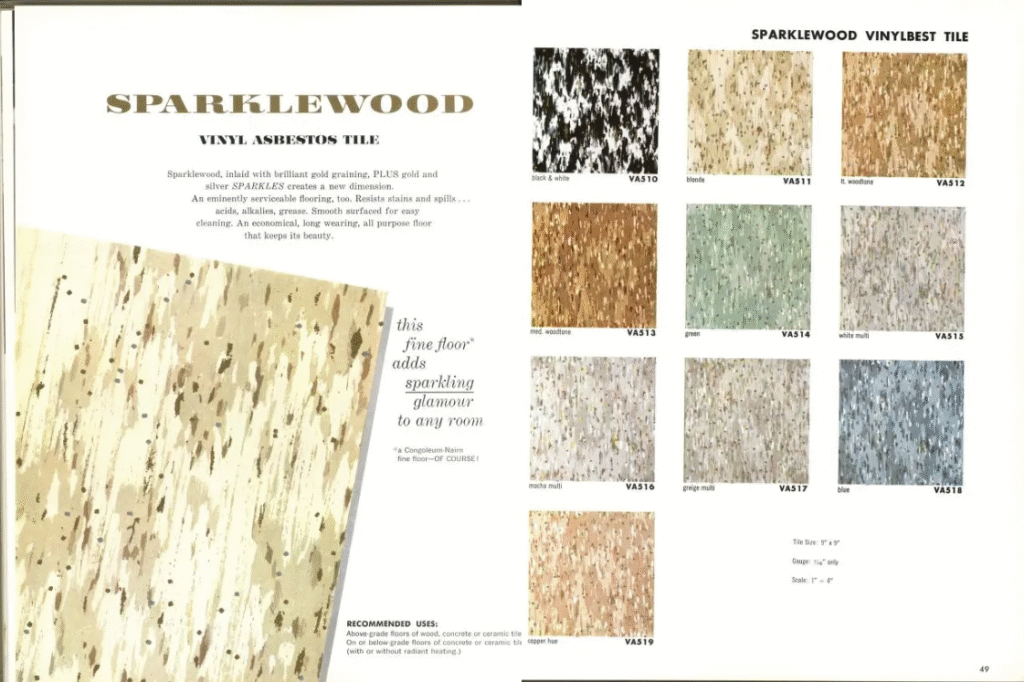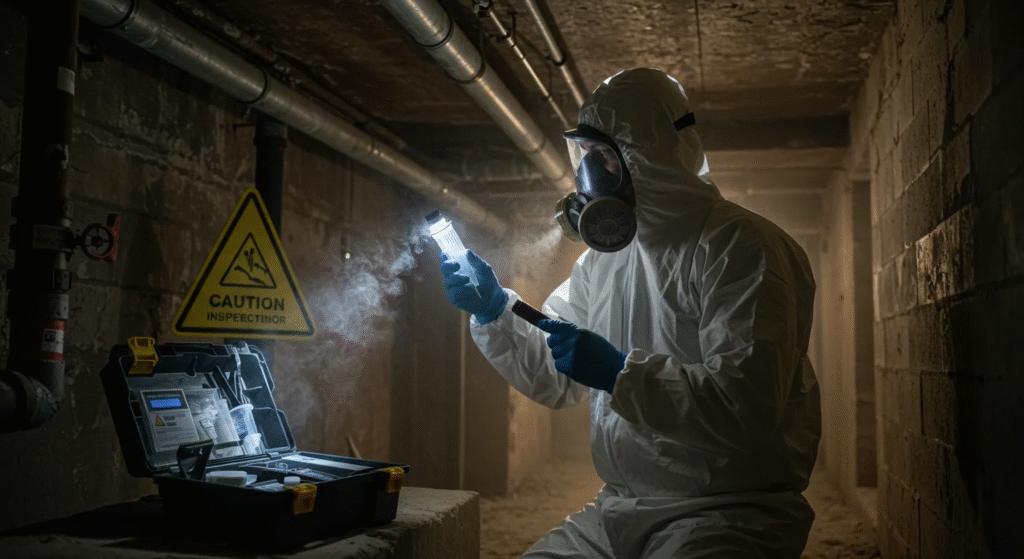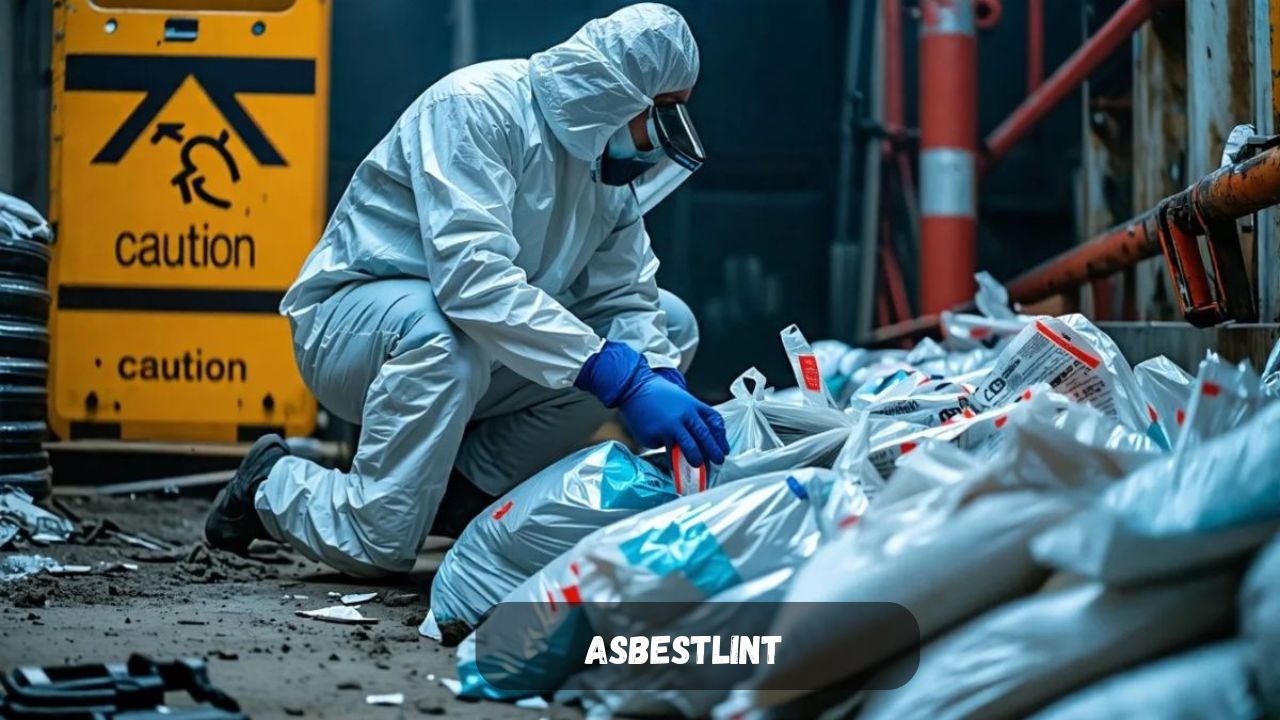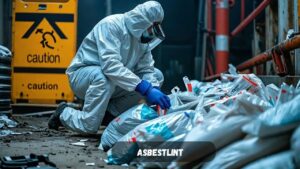“Asbestlint” is just a word for asbestos fibers. Tiny threads from a strange rock. At first, people thought it was a gift. It was strong. It would not burn. Builders mixed it into walls, roofs, even brakes on cars. U.S. EPA and the Wisconsin Department of Health Services both explain how common it once was.
But the story turns dark. By the last century doctors began to notice something. Workers who breathed those little fibers, they got sick. Bad sick. Some with lungs that stopped working. Some with cancers that appeared many years later. Asbestos Safety and Eradication Agency calls it one of the biggest health risks of modern times.
And it’s not gone. Old schools, homes, factories many still hide asbestlint in their walls. The danger comes when you cut it, break it, or move it. Then the fibers float free, light as dust, waiting to be breathed. That’s why we need to talk about it now. In the next parts, you’ll see what asbestlint really is, where it was used, why it harms, and how we deal with it today.
| Category | Fact / Figure |
|---|---|
| Meaning | Asbestlint simply means asbestos fibers. “Asbest” = asbestos, “lint” = fluff, small threads. |
| First major use | People started using it big in the 1800s. Cement, insulation, even textiles carried it. |
| Peak use worldwide | Around 1950s–70s. Whole cities got built with it. |
| First country to ban | Iceland, 1983. A small country, but first to say no. |
| Full bans today | Over 60 countries. Europe, UK, Australia, Japan — they all stopped it. |
| Still in use | Russia, China, India. Some others too. They still mine and sell it. |
| Health risks | Breathing it in causes scars in lungs, cancers, mesothelioma. Silent and slow. |
| Latency period | Takes 20–40 years before people even know they’re sick. |
| Deaths every year | More than 90,000 worldwide. Every year. That’s the human cost. |
| Modern alternatives | Now we got fiberglass, mineral wool, cellulose, ceramics. Safer, cheaper in long run. |
Origin and Meaning of the Word
The word looks strange at first. Asbestlint. It’s just two pieces joined together. The first, asbest, comes from the old Greek word ásbestos, meaning “inextinguishable.” A thing you cannot put out. (Etymology Online) Later people also used amiantos, which meant undefiled, like a cloth that goes into fire and comes back clean. (Wikipedia)
The second part, lint, is simpler. Just fine fibers. Loose fluff. Stuff that looks harmless. Put them together and you get “asbestlint” asbestos fibers.
In Northern Europe and Scandinavia, old books and stories mention this strange fiber. Some talk of cloth that never burns. That was likely asbestos, or asbest-lint as they may have called it.
There’s a small but big difference. Asbestos is the whole mineral group. Rocks, cement, sheets, the bulk. Asbestlint is when those rocks split into tiny fibers. Thin. Sharp. Invisible. And dangerous.
Properties of Asbestlint
The fibers are long and thin. Stronger than they look. If you pull them, they hardly snap. And if one breaks, it splits into more fibers. Smaller. Lighter. Harder to catch.
Asbestlint will not burn. You can throw it in fire and it comes out the same. (Wikipedia) That’s why people once trusted it to keep them safe. It also blocks heat. Good at keeping warmth in, or stopping heat from spreading.
It lasts. Doesn’t rot. Doesn’t decay with water, time, or many chemicals. And it was cheap. Easy to dig from the ground. Easy to weave, mold, or mix into cement. That’s why it spread everywhere.
Common Uses of Asbestlint in the Past
Walk through an old town and you’ll see it, even if you don’t know. Roof tiles, floor tiles, siding. EPA lists asbestos cement, pipes, shingles all common. Factories packed it around boilers, pipes, walls to keep the heat in. (Mesothelioma Center)
It was in textiles too. Fire blankets that refused to burn. Gloves, suits for welders and firefighters. Even oven mitts. (Mesothelioma.com)
Industry loved it. Ships lined with asbestos for insulation. Engines sealed with asbestos gaskets. Cars with brake pads and clutch linings that survived heat and friction. (EPA, Wikipedia)
It was everywhere. Almost ordinary.

Health Risks and Dangers
But the very thing that made it useful also made it deadly. When you cut it, break it, or even drill a wall the fibers rise. Tiny threads float in the air. You cannot see them. You cannot smell them. (EPA, ATSDR)
Once inside the lungs, they stay. They scar the tissue. That’s asbestosis. Hard breathing, coughing, no cure. (Cleveland Clinic) Some fibers trigger lung cancer. (Cancer.gov) The most feared is mesothelioma, a rare but almost always fatal cancer. (ATSDR)
The cruelest part? It hides. You may not feel sick for 20, even 40 years. By the time symptoms come, it is too late.

Regulations and Bans
At first, nobody banned it. People thought asbestos was safe. It was useful, cheap, everywhere. But by the late 20th century, the truth was harder to hide. Workers were dying. Families too.
Some countries acted fast. Iceland was the first to ban asbestos fully in 1983. Then others followed through the 1980s and 1990s. The European Union made a complete ban by 2005.
In the United States, it’s different. There is no full ban. Instead, rules limit how it can be used. The EPA bans some asbestos products but not all. Certain uses remain legal, under strict safety standards.
Globally, the picture is mixed. Over 60 countries now have complete bans, including Australia, the UK, and all EU members. But others, like Russia, China, India, and even parts of the U.S., still allow it in some form. For many, asbestos mining and trade are still big business.
Modern Alternatives to Asbestlint
When bans came, industries looked for safer choices. They found them.
Fiberglass became one. Fine glass spun into threads, used for insulation. It’s not perfect, but far safer. Mineral wool and stone wool are others, made from melted rock spun into fibers. Both insulate well, resist fire, and don’t carry the same deadly risk. Cellulose insulation, made from recycled paper, is also popular — cheap, safe, and effective.
Technology pushed further. New ceramics, plastics, and fireproof fabrics replaced asbestos in clothes and industry. Heat-resistant gaskets and brake pads no longer need asbestlint. Step by step, the world moved away.
Handling and Safety Precautions
But asbestos is still here. In walls, roofs, pipes, old tiles. You don’t always see it. And as long as it sits undisturbed, it’s often not a danger. The problem comes when it breaks.
Today, laws say: only trained professionals should handle asbestos removal. They wear protective suits, masks, and follow strict steps. The material is sealed, packed, and taken to special waste sites. It cannot be tossed out like normal trash.
For homeowners, the advice is clear. Don’t drill, cut, or sand anything you suspect contains asbestos. Don’t try to remove it yourself. Call licensed workers. Even a small mistake can fill a room with deadly fibers. For workers in older buildings, safety training and protective gear are a must.
Future Outlook
The story isn’t over. Millions of old homes, schools, and factories still hold asbestos. It lingers in ceilings, walls, basements. Even decades after bans, it’s still there, waiting.
Health experts keep warning. People exposed years ago are still getting sick today. That will continue, because the diseases take so long to show. Monitoring, research, and treatment must go on.
At the same time, awareness grows. Schools teach about it. Campaigns remind homeowners to check before they renovate. Governments tighten rules, bit by bit.
The hope is clear: a future where no one breathes asbestlint again. But the legacy of asbestos will take generations to fade.
Conclusion
The story of asbestlint is a strange one. Once it was praised. Now it is feared. It was cheap, strong, fireproof. People trusted it, filled homes, schools, ships with it. For a while it looked like a miracle. But the same fibers that stopped fire also slipped into lungs. They stayed hidden. Quiet. And years later, sickness came. That is why countries began to ban it.
That is why new materials like fiberglass and mineral wool replaced it. Still, the danger hasn’t gone. Old walls and ceilings hold it even now. The diseases take decades to show, so the world is not free from it yet. Knowledge helped. Rules helped too.
But the real safety comes when people know the risk, respect it, and remove it with care. In the end, asbestlint is a warning. Even something useful can turn deadly when we learn the truth too late.








